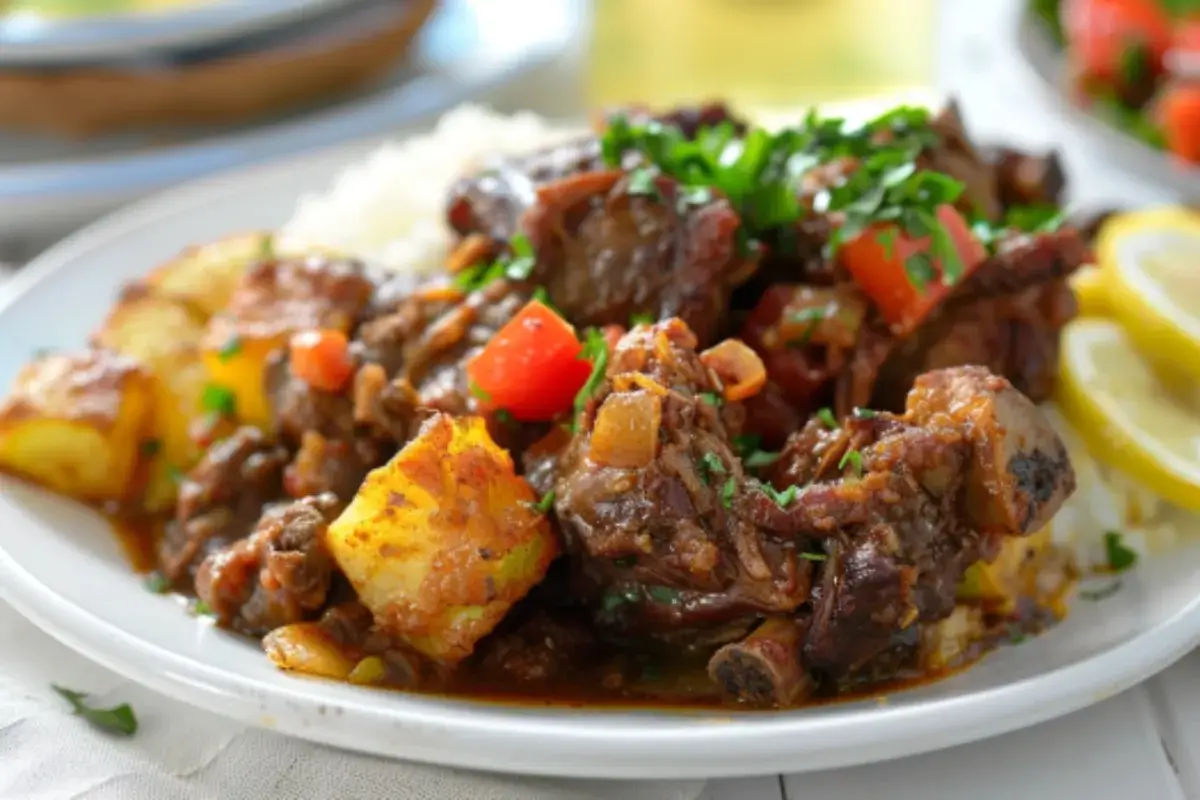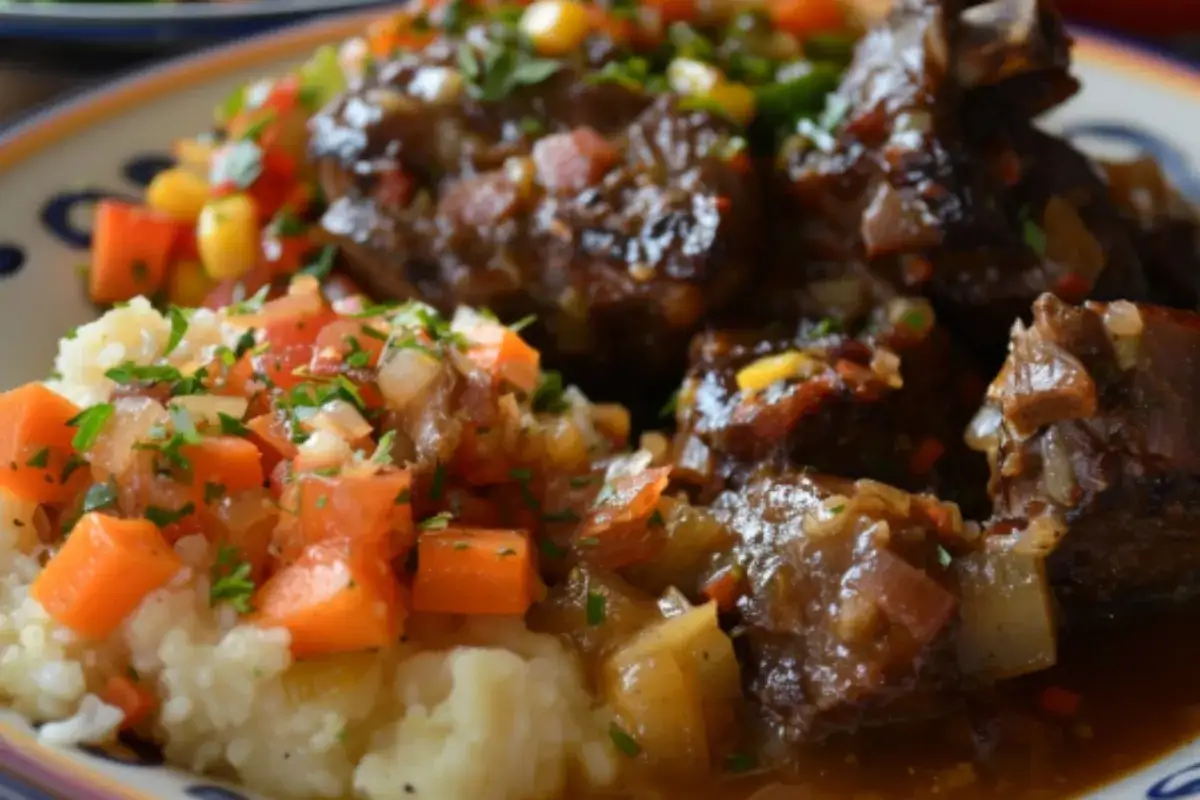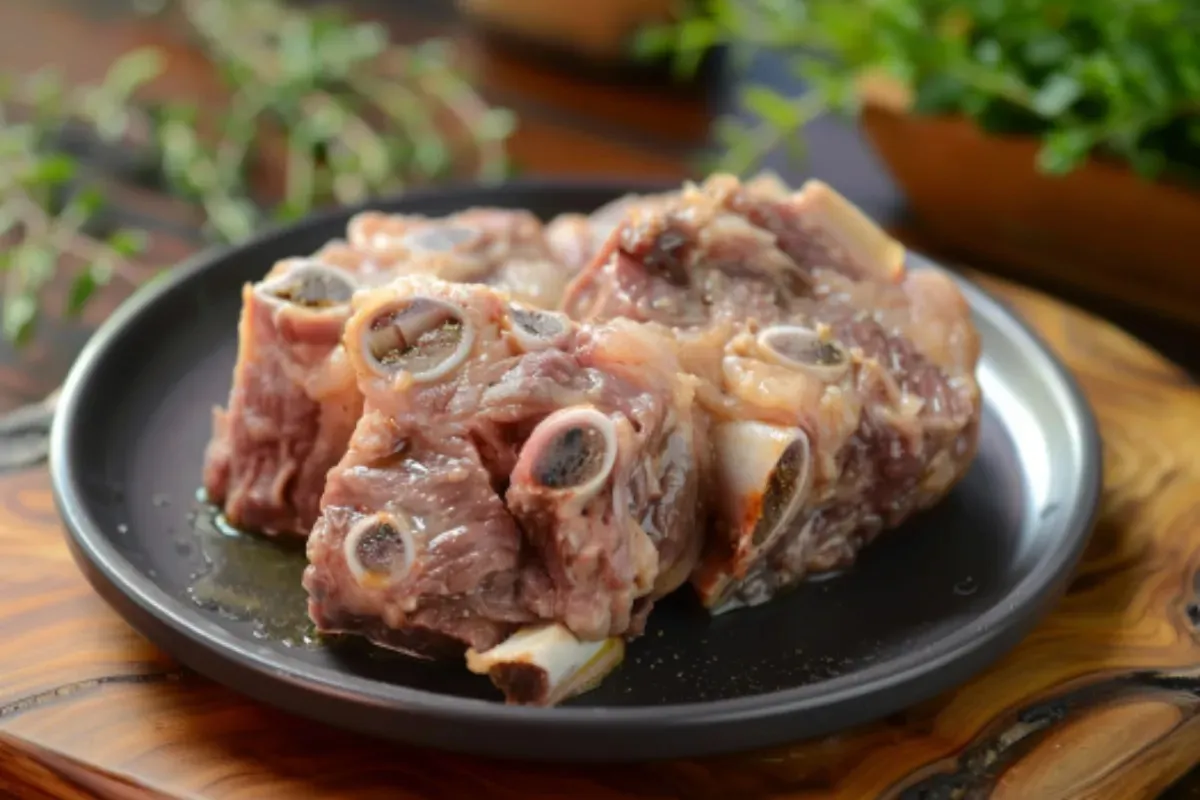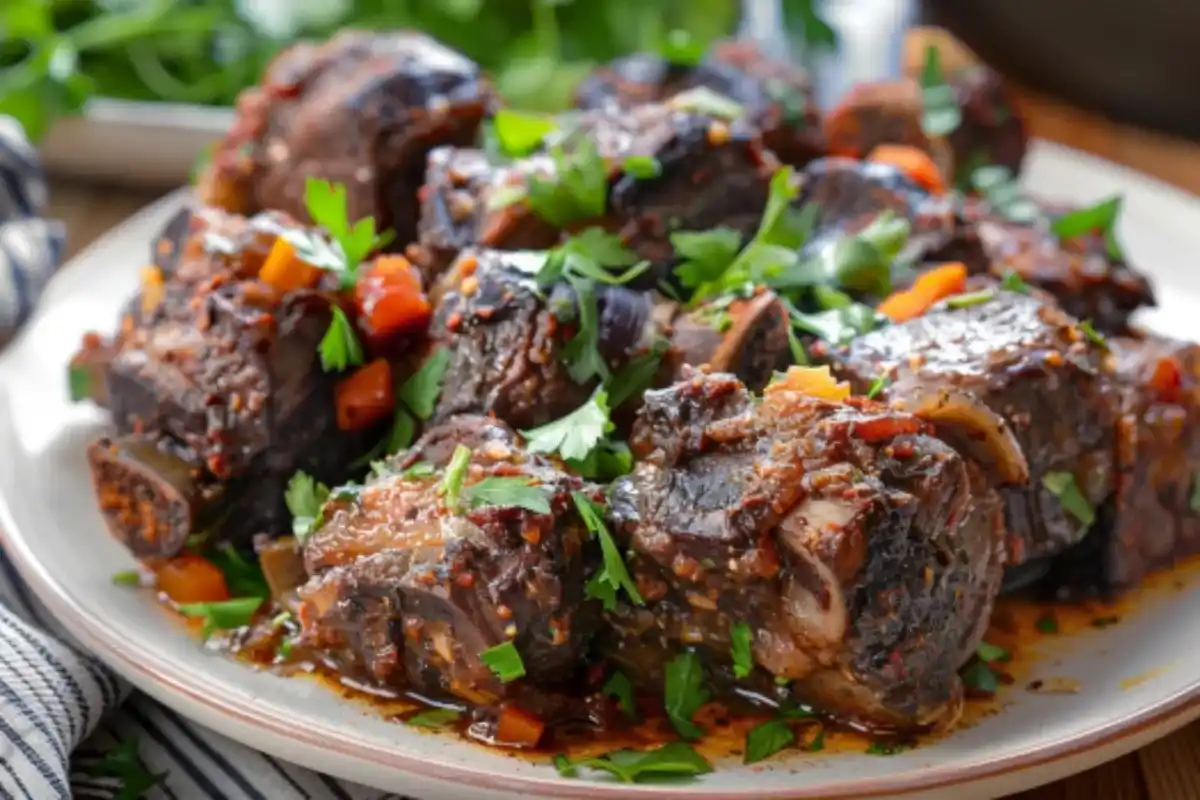Oxtail is a prized cut of meat in various culinary traditions around the world, known for its rich flavor and unique texture. As more home chefs experiment with different cuisines, the popularity of oxtail continues to rise. However, preparing oxtail is often viewed as a labor of love, requiring patience and care to ensure that the meat is tender and flavorful. One of the most frequently discussed steps in preparing oxtail is to soak oxtail before cooking. But why do you soak oxtail, and how does this practice enhance the final dish?
This article delves into the science, traditions, and practical benefits of soaking oxtail before cooking. It provides you with an in-depth understanding of the process. Whether you’re making a Caribbean oxtail stew or a Korean soup, soaking your oxtail can be the key. Additionally, it can elevate your dish to a whole new level of taste and texture.
Understanding Oxtail: What It Is and Why It Needs Special Preparation
Before we dive into the specifics of soaking, it’s essential to understand what makes oxtail such a unique and challenging cut of meat to work with. Oxtail is literally the tail of the cow, comprising bone, marrow, cartilage, fat, and a limited amount of meat. Because of its high collagen and connective tissue content, oxtail tends to be tough if not cooked correctly. Therefore, it’s important to soak oxtail before cooking. It’s typically braised or slow-cooked to break down the collagen and gelatin, resulting in a luscious and tender dish.
However, because of the tail’s composition, oxtail can have a strong, gamey flavor, and it often retains blood and other impurities that can affect the final taste. This is where soaking comes into play. By soaking the oxtail before cooking, you’re able to remove some of these impurities and mitigate the gamey flavors, allowing the natural richness of the meat to shine through.
The Practice of Soaking Oxtail: Origins and Cultural Significance

Soaking oxtail before cooking is a practice deeply rooted in tradition across various cultures. It’s commonly seen in Caribbean, Asian, and African cuisines, where oxtail is a staple ingredient in soups and stews. In many of these regions, the practice to soak oxtail before cooking in acidic solutions like vinegar or lemon juice is part of a broader culinary tradition of ensuring cleanliness and enhancing flavor.
In the Caribbean, for instance, soaking oxtail in vinegar or lime juice is a must-do step before making dishes like Jamaican oxtail stew. This practice is believed to remove impurities, reduce strong odors, and prepare the meat for marination. Similarly, in Asian cuisine, particularly in soups like Korean gomtang or Chinese oxtail soup, soaking helps ensure a clear broth and clean flavor.
Although soaking meat has been a topic of debate in modern kitchens, it continues to be a valued step for many home cooks and chefs, not just for its practical benefits but also for maintaining a connection to traditional culinary practices.
Why Do You Soak Oxtail Before Cooking? The Science Behind the Practice
1. Removing Impurities
One of the primary reasons to soak oxtail before cooking is to remove blood and impurities from the meat. Oxtail, like many other cuts of meat, contains blood, myoglobin (a protein that stores oxygen in muscle tissues), and other natural substances that can affect the flavor of the final dish. When you soak the oxtail in water or an acidic solution like vinegar, lemon juice, or lime juice, these substances are drawn out of the meat.
These impurities can impart a strong, metallic, or gamey taste to the dish if not removed properly. By soaking the oxtail, you reduce these unwanted flavors, allowing the rich, beefy taste of the oxtail to come forward without interference.
2. Enhancing Texture
Soak oxtail before cooking can also help improve the texture of the meat. As the oxtail soaks, the collagen and connective tissue begin to soften, making the meat more tender once it’s cooked. This is especially important in dishes that require long, slow cooking, such as braises or stews. When you soak the oxtail properly, it becomes easier to achieve that fall-off-the-bone tenderness that is characteristic of well-cooked oxtail dishes.
In Asian cuisine, where clear broths are highly prized, soaking also helps to ensure that the broth remains clean and clear, free of the cloudiness that can come from residual blood or myoglobin. This makes soaking a critical step in soups where the appearance of the broth is just as important as the flavor.
3. Reducing Strong Odors
Oxtail can sometimes have a strong, gamey smell that can be off-putting to some cooks and diners. This odor is often caused by the presence of blood and other natural impurities in the meat. By soaking oxtail before cooking, you can help to reduce or eliminate these odors, making the cooking process more pleasant and ensuring that the final dish has a clean, appealing aroma.
In Caribbean cuisine, where soaking in vinegar or citrus is common, this step is seen as essential for eliminating any unpleasant smells that could detract from the enjoyment of the dish. Soaking is particularly important when preparing large quantities of oxtail for a stew or soup, as the strong smell can become overwhelming if not properly managed.
Methods of Soaking Oxtail: How to Do It Right

There are several methods for soaking oxtail, each with its own benefits and considerations. Depending on the recipe and your personal preference, you can choose from the following methods:
1. Soaking in Water
One of the simplest methods is to soak the oxtail in cold water. This is a gentle method that helps to draw out blood and impurities without affecting the flavor or texture of the meat. Here’s how to do it:
- Place the oxtail in a large bowl and cover it with cold water.
- Let the oxtail soak for 30 minutes to an hour, occasionally changing the water to ensure that as much blood as possible is drawn out.
- Rinse the oxtail thoroughly after soaking and pat it dry before proceeding with your recipe.
This method is commonly used in Asian cuisine, where the goal is often to create a clear, clean broth.
2. Soaking in Vinegar and Water
Soak oxtail before cooking in a mixture of vinegar and water is another popular method, particularly in Caribbean and Southern American cuisines. The acidity of the vinegar helps to break down some of the proteins in the meat, resulting in a more tender texture. It also helps to remove strong odors and further reduce impurities.
- Place the oxtail in a large bowl and cover it with a mixture of water and vinegar (use about 1/4 cup of vinegar for every quart of water).
- Let the oxtail soak for 30 minutes to an hour, then rinse thoroughly under cold water.
- Dry the oxtail before seasoning and cooking.
Vinegar-soaked oxtail is often used in Caribbean stews like Jamaican oxtail stew and other dishes where the richness of the meat is balanced by bold spices and seasonings.
3. Soaking in Lemon or Lime Juice
In Caribbean and African cooking, lemon or lime juice is often used to soak oxtail. The citric acid in these fruits helps to clean the meat and impart a subtle, fresh flavor that complements the richness of the oxtail. This method is especially common in Caribbean dishes, where the brightness of the citrus helps to balance out the deep, savory flavors of the stew.
- Cover the oxtail with a mixture of water and fresh lemon or lime juice (use the juice of 1-2 lemons or limes per quart of water).
- Let the oxtail soak for 30 minutes, then rinse thoroughly and pat dry.
- Proceed with your recipe, adding seasoning and spices as desired.
This method is particularly effective for preparing oxtail for dishes like Caribbean braises and stews, where the flavors of the citrus can help to brighten up the dish.
Practical Considerations: Is Soaking Oxtail Necessary for Every Dish?
While soaking oxtail before cooking is a common step in many traditional recipes, it’s not always necessary, depending on the dish you’re preparing and your personal preference. For some cooks, the benefits of soaking removing impurities, reducing odors, and enhancing texture are worth the extra time and effort. However, others may find that rinsing or parboiling the oxtail is sufficient for their needs.
In certain dishes, such as braises or slow-cooked stews, the long cooking time may naturally help to break down impurities and tenderize the meat without the need for soaking. However, for soups and broths, especially in Asian and Caribbean cuisine, soaking is often considered an essential step to achieve the desired clarity and flavor.
If you’re short on time, parboiling the oxtail can be a quick alternative to soaking. Simply bring a pot of water to a boil, add the oxtail, and let it boil for 5-10 minutes. Drain the water, rinse the oxtail, and proceed with your recipe. Parboiling can help to remove impurities while also reducing cooking time.
Common Mistakes When Soaking Oxtail
Soaking oxtail may seem like a straightforward process, but there are a few common mistakes that can affect the final outcome of your dish. Here’s what to avoid:
1. Over-Soaking
Soaking oxtail for too long can actually cause it to lose some of its flavor. If the meat is left in the soaking solution for several hours or overnight, it can become waterlogged, resulting in a less flavorful dish. For best results, stick to a soaking time of 30 minutes to an hour.
2. Not Rinsing Properly
After soaking, it’s important to rinse the oxtail thoroughly under cold water. Failing to rinse properly can leave residual impurities or traces of vinegar or citrus on the meat, which can affect the flavor of the final dish. Be sure to rinse the meat well and pat it dry before cooking.
3. Skipping the Drying Step
Drying the oxtail after soaking is crucial for achieving a good sear on the meat. If the oxtail is still wet when it goes into the pan, it will steam rather than sear, resulting in a less flavorful dish. After rinsing, be sure to pat the oxtail dry with paper towels before seasoning and cooking.
Cooking Techniques for Oxtail: How Soaking Enhances the Final Dish

Once you soak oxtail before cooking, rinse, and dry it, it’s ready to be cooked using a variety of methods. Here are some popular cooking techniques for oxtail and how soaking enhances the final result:
1. Braising
Braising is perhaps the most common method for cooking oxtail. In this technique, the oxtail is first seared to develop a rich, caramelized crust, then simmered in a flavorful liquid (such as broth, wine, or tomatoes) until the meat becomes tender and falls off the bone. The slow cooking process allows the collagen and connective tissue in the oxtail to break down, resulting in a rich, silky texture.
Soaking the oxtail before braising helps to remove any impurities that could cloud the braising liquid, ensuring that the sauce remains clear and flavorful. It also helps to soften the meat, reducing the cooking time and making the braising process more efficient.
2. Slow Cooking
Slow cooking is another excellent method for preparing oxtail, especially if you’re looking for a hands-off approach. In a slow cooker, the oxtail can be cooked over several hours until it reaches perfect tenderness. The low, steady heat allows the meat to break down gradually, resulting in a deeply flavorful dish.
Soaking the oxtail before slow cooking helps to prevent any unwanted flavors from developing during the long cooking process. It also ensures that the final dish has a clean, pure flavor, allowing the natural richness of the oxtail to come through.
3. Pressure Cooking
For cooks who are short on time, pressure cooking can be a great way to achieve tender, flavorful oxtail in a fraction of the time it would take using traditional methods. The high pressure helps to break down the collagen and connective tissue quickly, resulting in a melt-in-your-mouth texture.
Soaking the oxtail before pressure cooking helps to ensure that the meat remains tender and flavorful, even under high pressure. It also helps to remove impurities that could affect the taste and texture of the final dish.
Frequently Asked Questions About Soaking Oxtail
1. Is soaking oxtail necessary?
- Soaking oxtail is not strictly necessary for all recipes, but it can be a beneficial step for removing impurities, reducing strong odors, and enhancing the texture of the meat. For dishes that require a clear broth or delicate flavor, such as soups and stews, soaking is highly recommended.
2. How long should you soak oxtail?
- The ideal soaking time for oxtail is 30 minutes to an hour. This is enough time to remove impurities and soften the meat without causing it to lose flavor.
3. What should you soak oxtail in?
- You can soak oxtail in cold water, vinegar and water, or lemon or lime juice and water, depending on the recipe and your personal preference. Each method has its own benefits and can enhance the flavor and texture of the final dish.
4. Can you skip the soaking step?
- If you’re short on time or don’t mind a slightly stronger flavor, you can skip the soaking step. However, keep in mind that soaking helps to remove impurities and improve the texture of the meat, so it’s worth considering if you want the best possible result.
Conclusion: Elevating Your Oxtail Dishes Through Soaking
Soaking oxtail before cooking is a simple but effective step. This practice can greatly enhance the flavor, texture, and overall quality of your dish. Whether you’re preparing a hearty Caribbean stew or a flavorful Asian soup, soaking your oxtail before cooking can make all the difference. Additionally, when you soak the oxtail, you remove impurities and reduce gamey flavors. This process also softens the meat. Overall, soaking allows the natural richness of the oxtail to shine through. As a result, you’ll create a dish that is sure to impress.
With these tips and techniques, you’ll be well-equipped to create oxtail dishes that are tender, flavorful, and deeply satisfying. Whether you’re a seasoned cook or just starting to experiment with oxtail, soaking is a valuable step that can take your cooking to the next level. So go ahead, give it a try, and enjoy the delicious results!

